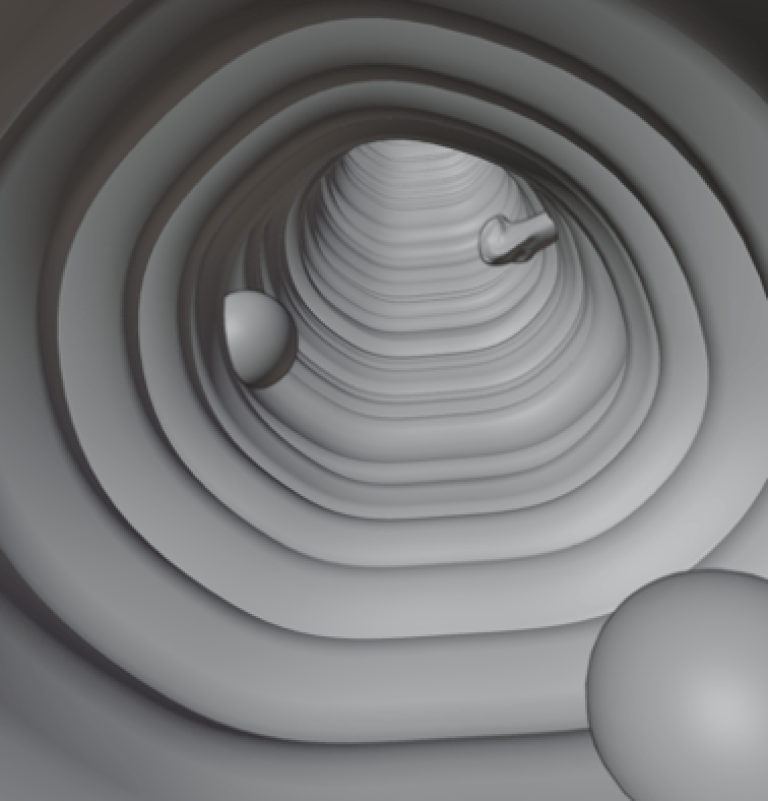Randomising Blender scene properties for semi-automated data generation
ARC's Research Software Engineers worked with WEISS to develop a Blender add-on to randomise relevant parameters for the generation of datasets for polyp detection within the colon during surgery.

25 January 2024
Background
Blender is free and open-source software for 3D geometry rendering. Uses include modelling, simulation, animation, virtual reality applications, and more recently synthetic datasets generation. This last application is of particular interest in the field of medical imaging, where often there is limited real data that can be used to train machine learning models. By creating large amounts of synthetic but realistic data, we can improve the performance of models in tasks such as polyp detection in image guided surgery. Synthetic data generation has other advantages since using tools like Blender gives us more control and we can generate a variety of ground truth data from segmentation masks to optic flow fields, which in real data would be very challenging to generate or would involve extensive time consuming manual labelling. Another advantage of this approach is that often we can easily scale up our synthetic datasets by randomising parameters of the modelled 3D geometry. There can be challenges to make the data realistic and representative of the real data.
The Problem
The aim was to develop an add-on that would help researchers and medical imaging experts determine which range of parameter values make realistic synthetic images. Prior to the project, the dataset generation involved a more laborious process of manually creating scenes in Blender with parameters changed manually for introducing variation in the datasets. A more efficient process was needed during the prototyping of synthetic dataset generation to decide what range of parameters make sense visually, and therefore in the future, to more easily extend to other use cases.
What we did
In collaboration with the UCL Wellcome / EPSRC Centre for Interventional and Surgical Sciences (WEISS), Ruaridh Gollifer and Sofia Minano, who are research software engineers from ARC, developed a Blender add-on to randomise relevant parameters for the generation of datasets for polyp detection within the colon. The add-on was originally developed to render a highly diverse and (near) photo-realistic synthetic dataset of laparoscopic surgery camera views. To replicate the different camera positions used in surgery as well as the shape and appearance of the tissues, we focused on randomising three main components of the scene: camera transforms (camera orientation and location), geometry and materials. However, we allowed for more flexibility beyond these 3 main groups of parameters, implementing utilities to randomise other user-defined properties. The software also allows the following features: 1) setting the minimum and maximum bounds through an input file, 2) setting a randomisation seed for reproducibility, 3) exporting output parameters for a chosen number of frames to an output file. The add-on includes testing through Pytest, documentation for users and developers, example input and output files and a sample Blender scene.
The Outcomes
Version 1.0.0 of the Blender Randomiser is available under a BSD 3-Clause License. The GitHub repo is public where the software can be downloaded and installed with instructions provided on how to use the add-on. Examples of what can be produced in Blender can be found at the UCL Research Data Repository (N.B. these examples were produced manually prior to completion of this project).
Developer notes are also available to allow contributions.
Links
- Blender Randomiser GitHub Repository
- Examples in UCL RDR
- UCL Wellcome / EPSRC Centre for Interventional and Surgical Sciences (WEISS)
 Close
Close

